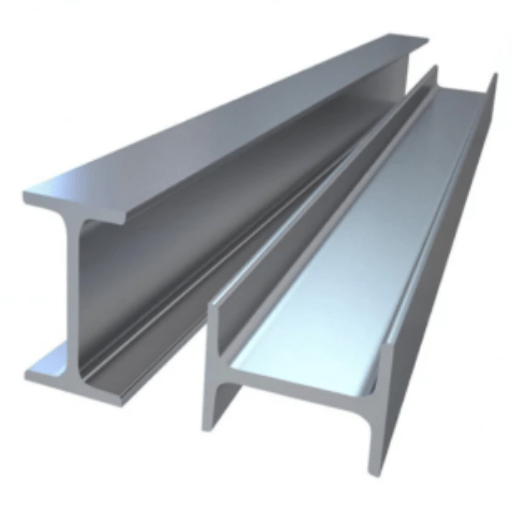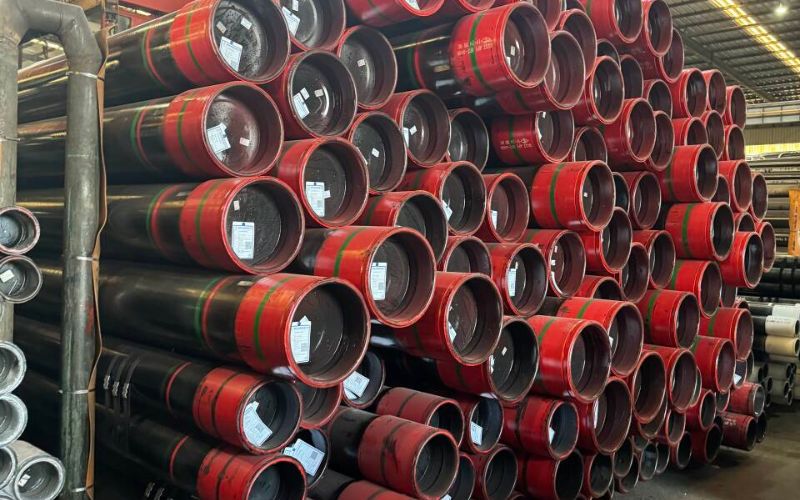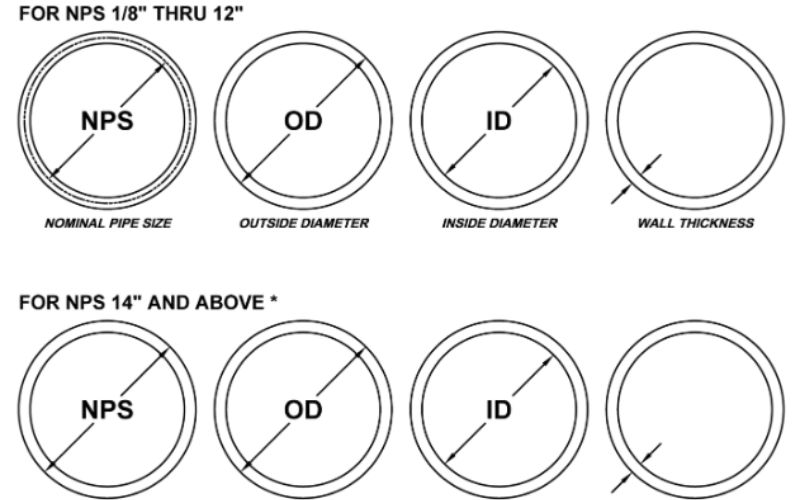When you think of construction materials that can serve multiple purposes, A36 steel plate stands out as one of the most durable and adaptable ones. The A36 steel plate is a hot-rolled carbon steel that is known across the industry for its great strength, excellent weldability, and cost-effectiveness. Its applications range from construction to manufacturing. A36 steel plate is the material of choice right from making structural frameworks to machining parts, as well as for any other generator of projects where a dependable material is needed.
This article lets you in on the most important characteristics, different uses, and the advantages of A36 steel, which will eventually lead you to the conclusion why it still happens to be a little bit of engineers and fabricators’ favorites all over the world. By taking a closer look at its specifications and practical uses, the reader will gain valuable insights into how this material can improve the performance of their future project.
Introduction to A36 Steel Plate

A36 steel plate is a popular choice among structural steels due to its adaptability, strength, and economical price. It is covered by the ASTM A36 specification and is a carbon steel mainly used in structural applications like construction, bridges, and industrial works. Its main characteristics are outstanding weldability, machinability, and durability, which make it fit for many applications. Moreover, A36 steel plate offers a well-balanced mix of toughness and ductility, hence providing safety in different load-bearing and dynamic situations.
What is A36 Steel?
A36 steel is an extensively used carbon steel grade under the ASTM A36 standard and it was primarily designed for structural purposes. It possesses good characteristics of welding, cutting and durability, thus making it the material of choice for buildings, bridges and other manufacturing plants. A36 steel is a mixture of strength and plasticity which assures its use in both static and dynamic loads.
Overview of ASTM A36 Standards
The ASTM A36 standard is a specification for carbon structural steel which is utilized in building. It depicts the mechanical traits, among which is a minimum yield strength of 36,000 psi, and it also specifies the chemical composition limits, thereby providing assurance of uniform performance. The standard applies to steel elements employed in concrete work, where welding, riveting, or bolting methods are used, and it also assures the strength and dependability of steel in different structural uses.
📋 Key Standard Requirements:
- Minimum Yield Strength: 36,000 psi
- Application: Structural steel for buildings and bridges
- Connection Methods: Welding, riveting, or bolting
- Performance: Uniform and consistent across applications
Characteristics of A36 Steel Plate
A36 steel plate is loved for its multiple advantages, such as high strength, great weldability, and versatility; hence, it is widely used in structural applications. It has an average yield strength equal to 36,000 psi at least, and gives good machining, and plasticity. Besides, it can be easily formed, cut, and fabricated, and employing it would be safe in construction, bridges, and general structural projects. The normal chemical composition brings durability along with resistance to wear at the same time as maintaining cost-effectiveness.
Mechanical Properties of A36 Steel

A36 steel is characterized by different properties that allow it to be used in a wide range of construction and industrial applications. Its mechanical properties are as follows:
1. Tensile Strength
58,000 to 80,000 psi, providing strong resistance to breaking when pulled.
2. Yield Strength
Minimum of 36,000 psi, enabling stress resistance without permanent deformation.
3. Elongation
20% for 8 inches or 23% for 2 inches, indicating good ductility and deformation capacity.
4. Hardness
Moderate hardness ideal for machining and forming operations.
Performance Summary: These characteristics make A36 steel both strong and flexible, thus it is ideal for load-bearing and structural applications.
Tensile Strength and Yield Strength
| Property | Value/Range | Significance |
|---|---|---|
| Tensile Strength | 58,000 – 80,000 psi | Maximum stress material can withstand during stretching or pulling without losing integrity |
| Yield Strength | Minimum 36,000 psi | Critical point where material starts to show permanent deformation |
Such values underline the capability of the material to support heavy loads and retain its structure even under extreme conditions.
Hardness and Ductility
💎 Hardness
Describes the degree of a material’s resistance against deformation, scratching or penetration. A36 steel is classified as a metal with moderate hardness which is proper for the majority of applications.
🔧 Ductility
A property that allows material to be subjected to large amounts of plastic deformation without breaking. A36 steel is very ductile and easy to use in different construction and fabrication applications.
Combined Performance: These properties guarantee the material to be both durable and flexible at the same time.
Impact Resistance and Thermal Properties
A36 steel can resist moderate impacts and stresses without breaking, which is an important factor for structural integrity. It retains its mechanical performance through a range of temperatures, losing some ductility only at cryogenic ranges as far as thermal properties are concerned. A36 steel’s conductivity and expansion properties are sufficient for normal construction environments, thus providing stability in the event of normal heating or cooling.
Using A36 Steel in Construction and Manufacturing

A36 steel is a material that is very preferred in construction and manufacturing because of the very good combination of strength, ductility and versatility. It is able to support heavy weights without safety being the issue so it is utilized in building frames, in bridges, and in other load-bearing structures to mention a few.
A36 steel is a material that is very often chosen for creating equipment, components, and machinery that require durability and resilience. Its weldability and machinability make it easy to work with and thus very efficient in the production process. Besides, its moderate corrosion resistance ensures longevity, making it a reliable choice for a range of applications.
Common Applications for A36
🏗️ Industry Applications:
- Construction: Structural beams, bridges, and buildings
- Manufacturing: Machinery and equipment production
- Components: Base plates, brackets, and storage tanks
- Industrial Equipment: Heavy machinery requiring durability and weldability
A36 steel is a material of choice for projects where cost efficiency and performance are the main factors.
Advantages of Using A36 Steel Plate
Excellent Weldability
Easy fabrication with standard welding methods, leading to efficient production processes.
High Tensile Strength
Long-lasting and reliable performance even under stress and heavy loads.
Cost-Effective
Economic choice for large-scale projects without compromising quality.
Versatile Applications
Suitable for both construction and manufacturing with consistent performance.
Fabrication Techniques for A36 Steel
A36 steel is one of the most versatile materials and at the same time it has a wide range of fabrication techniques. It is a very good choice for the industry, as it can be easily cut using plasma, laser, or oxy-fuel methods, thus guaranteeing precision. One can weld it with standard MIG, TIG, or arc welding techniques as well, owing to its great weldability, which also makes it a pretty good candidate for welding in tough situations. Besides, A36 steel can be easily delivered in a variety of ways such as bending, forming or machining which allows it to be used in a wide range of applications. If surface hardness enhancement is required, then heat treatment methods such as carburizing or quenching can be used, too. All these fabrication techniques justify the fact that A36 steel is one of the best choices for not only fast and reliable but also low-cost construction and industrial projects.
🔧 Available Fabrication Methods:
Welding and Joining A36 Steel Plates

A36 steel is very much adjustable and is characterized by its superb weldability. It is possible to connect it using different methods such as SMAW, GMAW, and GTAW. Preheating is usually not required for most cases because of the material’s low carbon content, which reduces the likelihood of cracking. Nevertheless, for thicker plates or highly stressed joints, preheating could be done to produce the best possible outcome.
Heat control in welding A36 steel plates is very important so as not to cause warping especially in larger or thinner sections. If the application requires heightened structural integrity, post-weld treatments such as stress-relieving or shot peening may be done. Generally, the tentativeness and right preparations of A36 steel make it the best option for structures that intend to be welded.
Best Practices for Welding A36 Steel
Material Preparation
Always ensure rust, oil and other contaminations are completely removed from the surface beforehand to assure weld penetration. Welds will only be as good as the surface they are being applied to.
Preheating
Thick sections and stressed joints should be preheated in colder environments around the weld area to minimize the possibility of cracking due to temperature changes.
Heat Control
Distortion and warping can be prevented by keeping the weld bead temperatures at the same level. Avoid overheating to maintain structural integrity.
Welding Technique
For each joint and project, determine suitable welding methods such as MIG, TIG, or stick welding based on the type of joint and requirements.
Post-Weld Treatments
If the application allows, perform stress-relieving or shot peening to improve structural integrity and reduce residual stresses.
Quality Assurance: By following these best welding practices, you can ensure the creation of strong and durable welds while at the same time, the minimization of problems during fabrication.
Choosing the Right Filler Materials
Selecting the right filler material is a key factor in getting good and dependable welds. The following factors should be taken into account for this purpose:
⚙️ Filler Selection Criteria:
1. Base Metal Compatibility
Filler metal should not only be electrically but also thermally compatible with the weld joint and have similar mechanical properties to the base metals being welded.
2. Application Requirements
Look at the conditions under which the joint will work, like the temperature, corrosion resistance, and wear, to find the most durable filler material.
3. Welding Process
Different welding methods require different filler wires (e.g., MIG, TIG, or stick).
4. Standards and Certifications
The use of filler materials which meet industry standards, for example, AWS or ISO, assures that the process is safe and reliable.
Expert Tip: Filler material selection that is in line with these factors will lead to an increase in weld quality and performance to a considerable extent.
Post-Weld Treatment Options
Post-weld treatment is of paramount importance for the enhancement of welded joints in terms of their strength, durability, and performance, at the same time minimizing the risk of developing weaknesses. The most common ways to treat welding properties include:
| Treatment Type | Methods | Benefits |
|---|---|---|
| Heat Treatment | Annealing, stress-relief heat treatment | Rearranges microstructure, reduces residual stresses, enhances mechanical properties |
| Mechanical Processing | Grinding, peening, machining | Works on weld surfaces, removes defects, provides better finish |
| Cleaning & Surface Prep | Pickling, blasting, passivation | Eliminates dirt, restores surface resistance to rusting (especially for stainless steel) |
| Non-Destructive Testing (NDT) | X-ray, ultrasonic testing, dye penetrants | Reveals presence of flaws or defects without harming the weld area |
Note: The choice of the right post-weld treatment is driven by application factors, the type of material, and the expected performance results.
Reference Sources
- Kloeckner Metals – A36 Steel: An In-Depth Investigation of A36 Steel Plate
Describes A36 steel characteristics and its main uses, especially in construction and structural projects. - Ryerson – A36 Steel: Properties, Applications, and Market Insights
Mentions the sectors that most often use A36 steel, namely those of construction, energy, and transportation. - Intsel Steel West – Grade Guide: ASTM A36 Steel
Points out the advantages of A36 steel, like its ductility and adaptability in a range of applications, among others.
Frequently Asked Questions (FAQs)
What is A36 steel plate?
A36 steel plate is a low-carbon steel with the most advantaged characteristics such as strength, ductility, and versatility, making it a common material in construction and manufacturing.
What are the common applications of A36 steel plate?
It is extensively used in the construction of buildings, bridges, and other structures along with heavy machinery and industrial equipment.
What are the key properties of A36 steel?
A36 steel has been appreciated for its superb welding, machining and breaking stress without yielding.
Is A36 steel plate suitable for welding?
It is true that A36 steel is very easy to weld and suitable for different methods of welding.
How does A36 steel compare to other steel grades?
A36 is a low-carbon steel with less than 0.26% carbon content resulting in better ductility and easier forming compared to the higher-carbon steels.
🎯 Key Takeaways
A36 steel plate remains an industry standard for structural applications due to its exceptional combination of strength, weldability, and cost-effectiveness. With a minimum yield strength of 36,000 psi and tensile strength ranging from 58,000 to 80,000 psi, it provides reliable performance across construction, manufacturing, and industrial sectors. Its excellent machinability, moderate hardness, and superior ductility make it the material of choice for engineers and fabricators worldwide. Whether you’re building bridges, structural frameworks, or manufacturing equipment, A36 steel delivers the durability and versatility needed for successful project outcomes.




